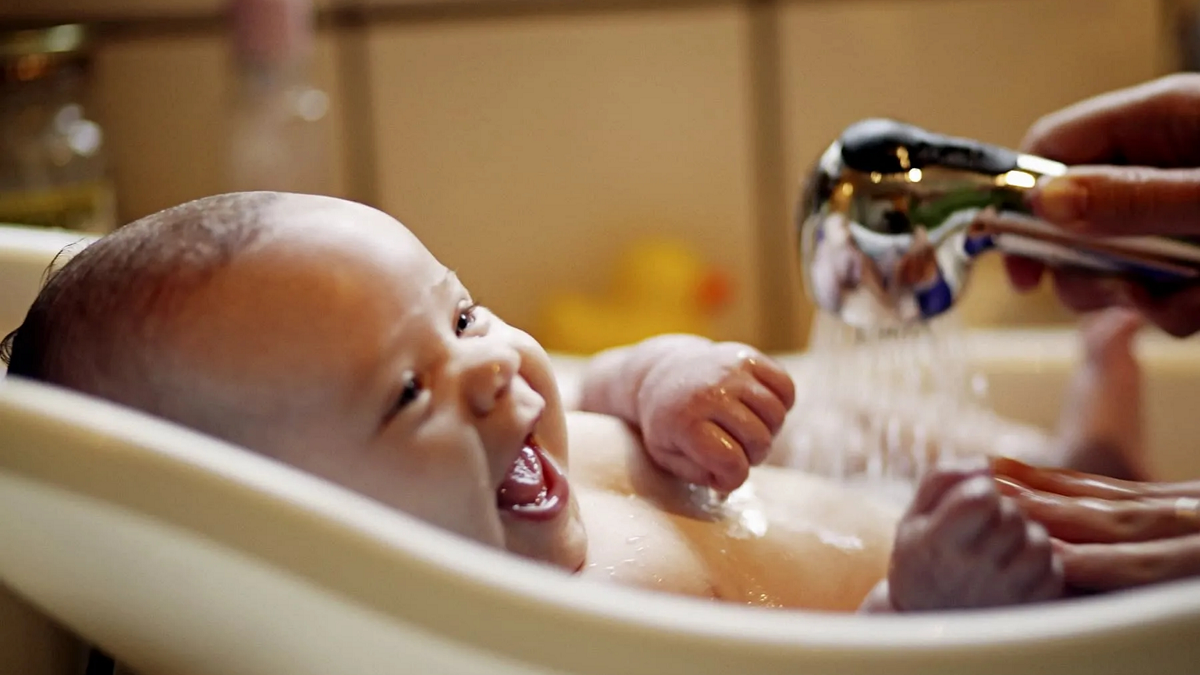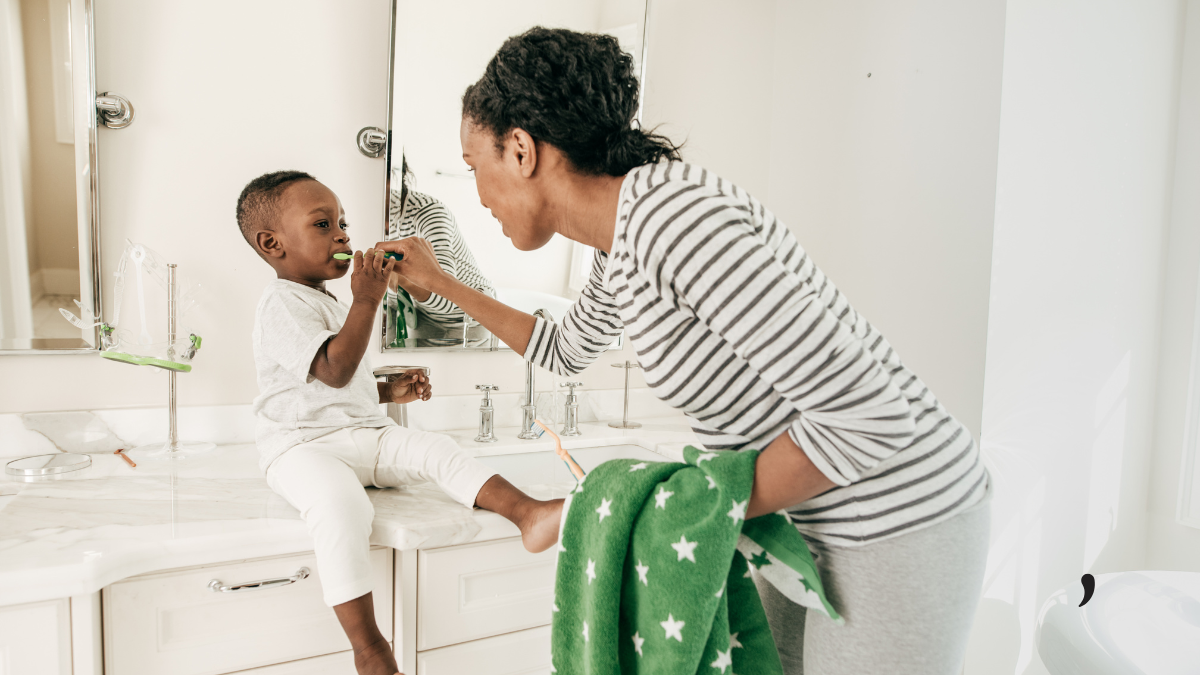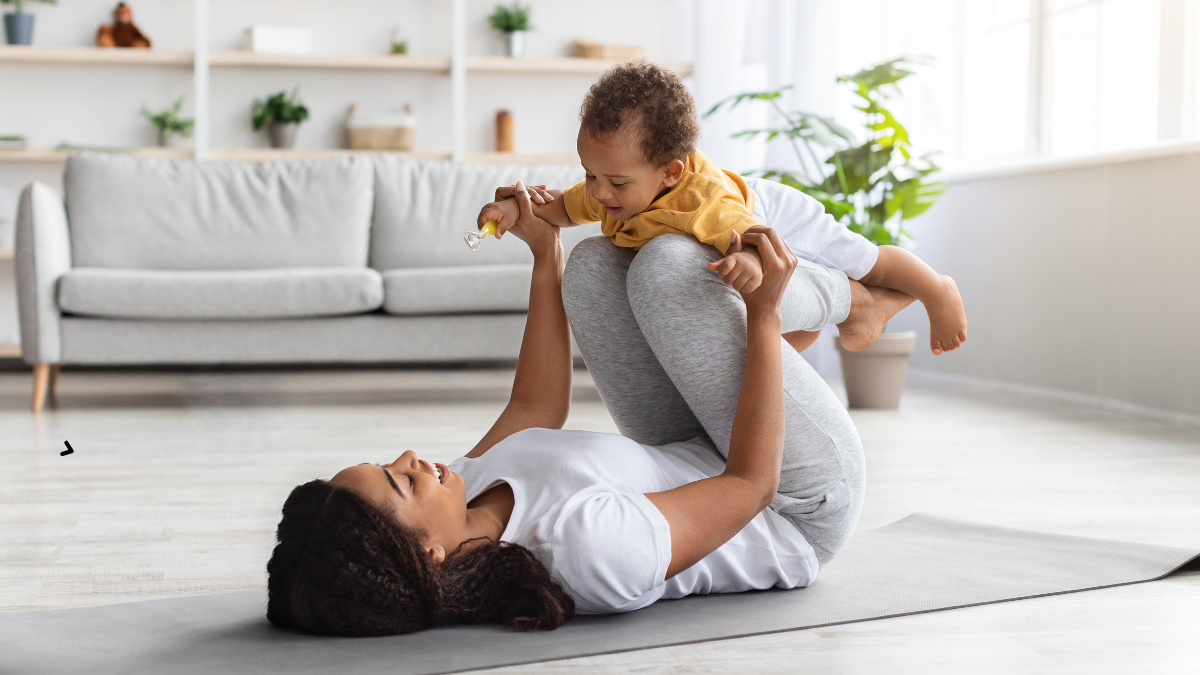Caring for a newborn can be a real test. There are many important, and at first, seemingly difficult things that you have to figure out.
But with a bit of practice, you will master them! Parents often ask themselves this question: How do you properly bathe a baby? Bathing your baby is one of the most important, tender, and also rewarding moments for parents and their children.
We know how crucial it is for babies to take baths carefully, tenderly, and safely. Bath time is a wonderful opportunity to bond with your baby, relax, and pamper them. With regular baths, you’ll gradually help your child get used to daily routines and develop a bathing schedule that will grow and change with them.

Why It Is Necessary to Bathe a Baby
Bathing a baby is essential for various reasons, not just so they don’t smell bad. Here are the main reasons why babies need baths:
Hygiene: Bathing helps wash off sweat, dirt, and sebum from the skin and also aids with cradle cap.
Direct Contact: Baby bath time is one-on-one time between the child and the parents.
Relaxation and Comfort: A soothing bath, filled with tenderness, sounds, smells, caresses, and pleasant water temperatures, helps your baby relax and get more comfortable sleep.
So remember: it’s essential for a child to have baths that are careful, safe, and regular.
Related: 7 Signs You’re Overfeeding Your Baby
When to Bathe a Baby
For newborns, it’s important not to rush into giving them a full bath in the first few days of life. We recommend giving your baby sponge baths for the first 1-2 weeks.
If your baby’s umbilical cord stump hasn’t fallen off yet, sponge baths are ideal to keep the navel area dry, as recommended by doctors, until it falls off on its own (usually within 1-2 weeks).
After the stump has fallen off and the navel has healed, you can bathe your baby in a gentle full bath.
Newborn parents don’t need to bathe their babies more than two to three times a week.
Collecting the Necessary Items
Before starting the bath, ensure that all the items you need are within reach so you don’t have to leave your baby during the process.
Here’s a list of items needed for bathing a baby:
Baby Bath Tub or clean sink
Warm water
Baby washcloths or sponges
Baby soap/shampoo
Soft towel (preferably hooded to wrap the baby)
Clean diaper and baby clothes
Cup or small bowl
Baby lotion
Related: How To Make Your Toddler Poop
How to Prepare for the Baby Bath
Ensure the bath is prepared as safely and comfortably as possible for the baby. The first step in preparing for the bath is to set up a comfortable, warm, and safe space for the baby.
Preparing the Baby Bath Tub or Sink: Fill the bathtub with a few inches of warm water (check the water temperature before placing the baby in). If you’re bathing the baby in the sink, place a clean towel at the bottom for extra protection and support.
Lay Out the Clean Towels and Clothes: Keep a clean, soft towel within arm’s reach, along with a fresh diaper and clothes for after the bath.
Create a Comfortable, Quiet Place: Dim the lights or close the curtains to create a peaceful atmosphere. Avoid distractions like TV or loud household noises that might startle the baby.
Wash Your Hands: Always wash your hands well before handling your baby to avoid contamination.
The Bathing Process: Step by Step
Now that you’ve prepared everything, it’s time for the bathing process. Follow our step-by-step guide to learn how to bathe your baby.
Step 1: Undress the Baby
Remove your baby’s clothes and begin by taking off the diaper. Keep your baby wrapped in a warm towel or blanket to help maintain their body heat. Remember, babies lose heat quickly, so it’s important to keep their bodies covered as much as possible during bath time.
Step 2: Support the Baby’s Head and Neck
Babies have little neck strength, so they must be supported, especially when they are just born. When placing a newborn in the bath, always support their head and neck. Hold the baby with one hand at their chest, and make sure their head rests in the bend of your arm.
Step 3: Gently Lower the Baby into the Water
Slowly lower your baby into the water, keeping their head above the water. Hold them securely, with their back supported by your arm. If using a baby bathtub, ensure the water doesn’t exceed the baby’s shoulder level.
Step 4: Wet the Baby’s Body
Use a soft washcloth or sponge to moisten your baby’s body, starting from their feet and working your way up. Don’t pour water directly over their head, as babies are sensitive to water in their eyes, nose, and ears.
Step 5: Clean the Baby’s Face and Eyes
Baby skin is very sensitive, so be extra careful when cleaning the baby’s face. Wipe the baby’s face with a soft, damp washcloth. Start with the eyes, wiping from the inner corner to the outer corner. Never rub the baby’s face—just use the washcloth to gently wipe it.
Step 6: Clean the Baby’s Body
Once the face is clean, use a small amount of baby soap or shampoo to lather up your washcloth or sponge. Start at the baby’s neck and work your way down to their feet. Be sure to clean the folds of their skin, like under the arms, behind the ears, and around the neck, where sweat and dirt can accumulate.
Step 7: Clean the Baby’s Hair
If your baby has hair, use a small amount of baby shampoo to wash their hair. Dilute the shampoo with a little water to create a lather. Gently apply the shampoo to their scalp and rinse it off with a cup of water. Hold your baby’s head to prevent water from getting into their eyes. If your baby has little or no hair, you can skip this step.
Step 8: Rinse the Baby
Once your baby is washed, it’s time to rinse them off. Use a cup or small bowl to pour warm water over their body. Be sure not to pour too much water at once, and check the temperature before pouring it on their skin.
Step 9: Lift the Baby Out of the Bath
Once your baby is clean, carefully lift them out of the bath, supporting their head and neck at all times. Hold them securely and place them gently onto a towel.
Related:15 Fun Things To Do With Your New Born Baby
Care of the Baby After Bathing
Dry your baby and make them comfortable after the bath.
Dry the Baby: Wrap the baby in a soft towel and gently pat their skin dry. Avoid rubbing, as baby skin is very sensitive.
Moisturize Baby’s Skin: Apply a gentle baby lotion to your baby’s skin to keep it soft and supple. This step is especially important if the baby has dry skin.
Put on a Diaper and Dress the Baby: Once your baby is completely dry, put on a fresh diaper and dress them in a soft, comfortable outfit.
Safety Tips for Bathing a Baby
Here are some important safety rules to remember when bathing your baby:
Never leave your baby unattended in the bath.
Check the water temperature every time before placing your baby in the bath.
Always support your baby’s head and neck while bathing.
Be gentle when washing your baby. Use a soft washcloth or sponge.
Make sure your baby is well-positioned and comfortable during the bath.
Related:20 Engaging Play Activities for Babies Aged 1-12 Months
When Not to Bathe a Baby
There are situations when it’s best not to bathe your baby. These include:
After Vaccinations: If your baby has just received a vaccination or has other symptoms of illness, avoid bathing them until they feel better.
Baby Has a Fever: If your baby has a fever, don’t bathe them in cold water.
Skin Rash: If your baby has a rash or skin irritation, consult your doctor before giving them a bath.
Conclusion
Bathing your baby is an important part of their daily routine. With time and practice, you’ll become more confident in the process and will enjoy spending quality time with your little one.
We hope this article helps you better understand the steps involved in bathing a newborn. Follow these easy steps, and your baby’s bath time will be safe and comfortable for both of you.
Save the pin for later




